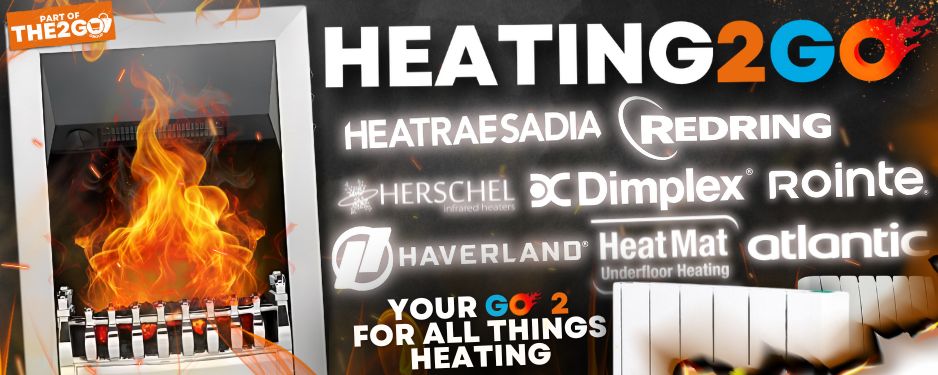Hi All
I wonder if you could help me with a small conundrum. I was recently called to the scene of a water leak in a bathroom installation that we carried out a few years ago. I will try to include as many as the details as I can.
The homeowner had walked in to the bathroom and found water had suddenly risen up from under the tiles. An emergency plumber from British Gas was called (on their home insurance scheme) and he broke out the tiled floor and screed, found the source of the leak, cut the 15mm copper pipes which teed of from a 22mm pipe (all under the screed) and which went on to supply the bathroom radiator and capped them. He then repressurised the system to confirm the leaks were on the 15mm side and the heating is now working again minus the bathroom radiator.
This is when I turned up to view the scene. It was apparent that when the original bathroom install was done, an existing radiator was removed, its 15mm supply pipes excavated and jointed with hep20 fittings, run in hep 15mm pipe under the screed (joints and pipe under screed) up into a new stud wall to serve the new rad. What would not have been apparent to the original plumber and was only discovered by the actions of the emergency plumber digging up the screed was that the 22mm pipe was in fact a 1 pipe system, as both 15mm copper tees came off the same pipe. I inspected the hep to copper connections and they were taped up to protect from the screed and the 15mm copper had been well rubbed down and polished before connection. The plastic pipe connections had used the metal inserts. Looking at the pattern of the water staining it was clear that the leak had occurred around the area of these connections and so on balance of probability it was probably these that leaked as opposed to an old degrading copper pipe.
My first thought was that the fault lay with the plumber for using hep connections under the screed. But I then pondered that although push fit has a bad reputation with some people, in my experience leaks can normally be traced back to user error (inserts/scratched pipe ends/not pushed home etc). The plumber who installed this pipe is meticulous with such things and we have never previously had a problem with Hep20 before, so it sat uneasily with me as an explanation. The screed patch was small so should not have put undue pressure on the fittings through expansion and contraction.
I then overheard the emergency plumber talking to the homeowner about the fact that the pressure gauge on their new combo boiler had failed and that he would come back and replace it. This however was an afterthought and he did not connect this to the work he had just done.
I don't have enough plumbing knowledge to form a authoritative view on the cause but I do have to invite someone to accept responsibility, plumber/householder/British Gas? In the end liability may lie with me as installer simply because its not clear what the cause of the leak was, but some guidance by experts would be most welcome!
I wonder if you could help me with a small conundrum. I was recently called to the scene of a water leak in a bathroom installation that we carried out a few years ago. I will try to include as many as the details as I can.
The homeowner had walked in to the bathroom and found water had suddenly risen up from under the tiles. An emergency plumber from British Gas was called (on their home insurance scheme) and he broke out the tiled floor and screed, found the source of the leak, cut the 15mm copper pipes which teed of from a 22mm pipe (all under the screed) and which went on to supply the bathroom radiator and capped them. He then repressurised the system to confirm the leaks were on the 15mm side and the heating is now working again minus the bathroom radiator.
This is when I turned up to view the scene. It was apparent that when the original bathroom install was done, an existing radiator was removed, its 15mm supply pipes excavated and jointed with hep20 fittings, run in hep 15mm pipe under the screed (joints and pipe under screed) up into a new stud wall to serve the new rad. What would not have been apparent to the original plumber and was only discovered by the actions of the emergency plumber digging up the screed was that the 22mm pipe was in fact a 1 pipe system, as both 15mm copper tees came off the same pipe. I inspected the hep to copper connections and they were taped up to protect from the screed and the 15mm copper had been well rubbed down and polished before connection. The plastic pipe connections had used the metal inserts. Looking at the pattern of the water staining it was clear that the leak had occurred around the area of these connections and so on balance of probability it was probably these that leaked as opposed to an old degrading copper pipe.
My first thought was that the fault lay with the plumber for using hep connections under the screed. But I then pondered that although push fit has a bad reputation with some people, in my experience leaks can normally be traced back to user error (inserts/scratched pipe ends/not pushed home etc). The plumber who installed this pipe is meticulous with such things and we have never previously had a problem with Hep20 before, so it sat uneasily with me as an explanation. The screed patch was small so should not have put undue pressure on the fittings through expansion and contraction.
I then overheard the emergency plumber talking to the homeowner about the fact that the pressure gauge on their new combo boiler had failed and that he would come back and replace it. This however was an afterthought and he did not connect this to the work he had just done.
I don't have enough plumbing knowledge to form a authoritative view on the cause but I do have to invite someone to accept responsibility, plumber/householder/British Gas? In the end liability may lie with me as installer simply because its not clear what the cause of the leak was, but some guidance by experts would be most welcome!


